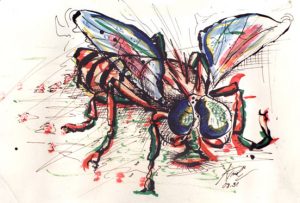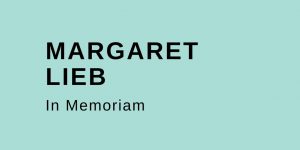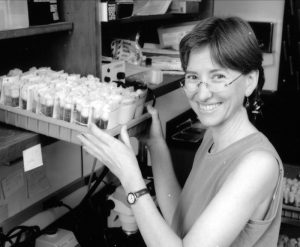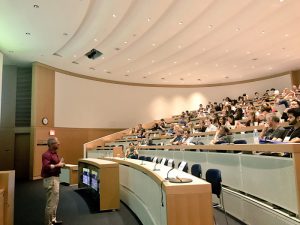Enter your address to receive notifications about new posts to your email.
Articles by Guest Author (190 results)
-
Why funding fruit fly research is important for the biomedical sciences
Guest post by Andreas Prokop. This blog post was originally published as an article in Open Access Government (Prokop, 2018b) to advocate for the importance of Drosophila research. It follows up on a previous piece in the same journal advocating for developmental biology (Prokop, 2018a). These articles aim to showcase how policy and decision makers…
-
In memoriam: Bruce Baker
Bruce Stewart Baker—the geneticist whose work uncovered molecular mechanisms of Drosophila sex determination and dosage compensation—died unexpectedly on July 1, 2018. He was 72. Bruce Baker was born on Dec 20, 1945 to William K. (Bill) Baker—also a renowned Drosophila geneticist —and Margaret I. Stewart in Swananoa, NC, the site of the closest army hospital…
-
In memoriam: Margaret Lieb
Guest post by Nina Wolff pays tribute to long-standing GSA member Margaret Lieb. Margaret (Peggy) Lieb died on March 8, 2018 in South Pasadena, California at the age of 94. After attending schools in New Rochelle, NY, she graduated magna cum laude from Smith College, and subsequently studied with H.J. Muller at Indiana University and…
-
A remembrance: Dr. Kathleen A. Matthews & the Bloomington Drosophila Stock Center and FlyBase
Guest post by Thomas Kaufman in memory of Kathy Matthews. The original Drosophila Stock Center was housed at Cal Tech in Pasadena and was established by Calvin Bridges and Alfred Sturtevant—students of Thomas Hunt Morgan. On Morgan’s and Bridges’ deaths, the responsibility for the collection fell to Sturtevant, who subsequently passed it to his student…
-
Reevaluating the Role of Staff Scientists
Guest post by Irini Topalidou. In the last decade or so, biological research has moved to a new level of complexity and competitiveness. Principal Investigators (PIs) are now primarily tasked with grant writing and managing, while also executing the numerous additional responsibilities the position demands. But to be successful, labs require experienced scientists to help…
-
Enriching the science training experience requires empathy and compassion
Guest post by Faten Taki. Leaving work late the other night, I crossed paths with a tearful postdoc colleague. The encounter left a scar in me. I was tired after what was for me a long day. But for her, it was after yet another mandatory four-hour meeting that ended at 10 pm. As she…
-
Beyond the #GradTax: more tax proposals that threaten the scientific community
Guest post by the GSA Early Career Scientist Policy Subcommittee Scientific progress is at risk from proposed changes to the US tax code. These changes, proposed by both the House and Senate, threaten to constrict the supply of research labor and funding, the impact of which will be felt for generations. The scientific community has…
-
Career Development Symposium Report: Ethical and Inspiring Mentorship in STEM
Guest post by Pinar Gurel. GSA is currently accepting proposals from students and postdocs for the next round of Career Development Symposia. Gain leadership experience and serve the early career scientist community! Among the many roles that scientists play, mentoring younger scientists is one that researchers are rarely trained for. In the current STEM research environment,…
-
Career Development Symposium Report: Toronto RNA Enthusiasts’ Day
Guest post by Miranda Wang and Ashrut Narula. GSA is currently accepting proposals from students and postdocs for the next round of Career Development Symposia. Gain leadership experience and serve the early career scientist community! On August 2nd, 2017, the second annual Toronto RNA Enthusiasts’ Day (TREnD) was held at the Peter Gilgan Centre for Research and Learning…
-
How your experiences translate to job skills
Guest post by Kalyn Gackowski What makes me unique? How are my experiences relevant? How can I show them I’m the ideal candidate? What do I know about [dream job I have never had direct experience in]? Whether you’re looking for a job or just starting your career exploration, the answer to these questions will…
-
Postbaccalaureate Training Enhances Preparation for Graduate School
Guest post by Lynn S. Villafuerte. The first post in our new Career Tips series explores a way for students to increase their competitiveness and preparation for graduate training. If you are considering PhD training, an essential first step is to assess your fit and competitiveness for graduate school. As part of this assessment, you should identify…









